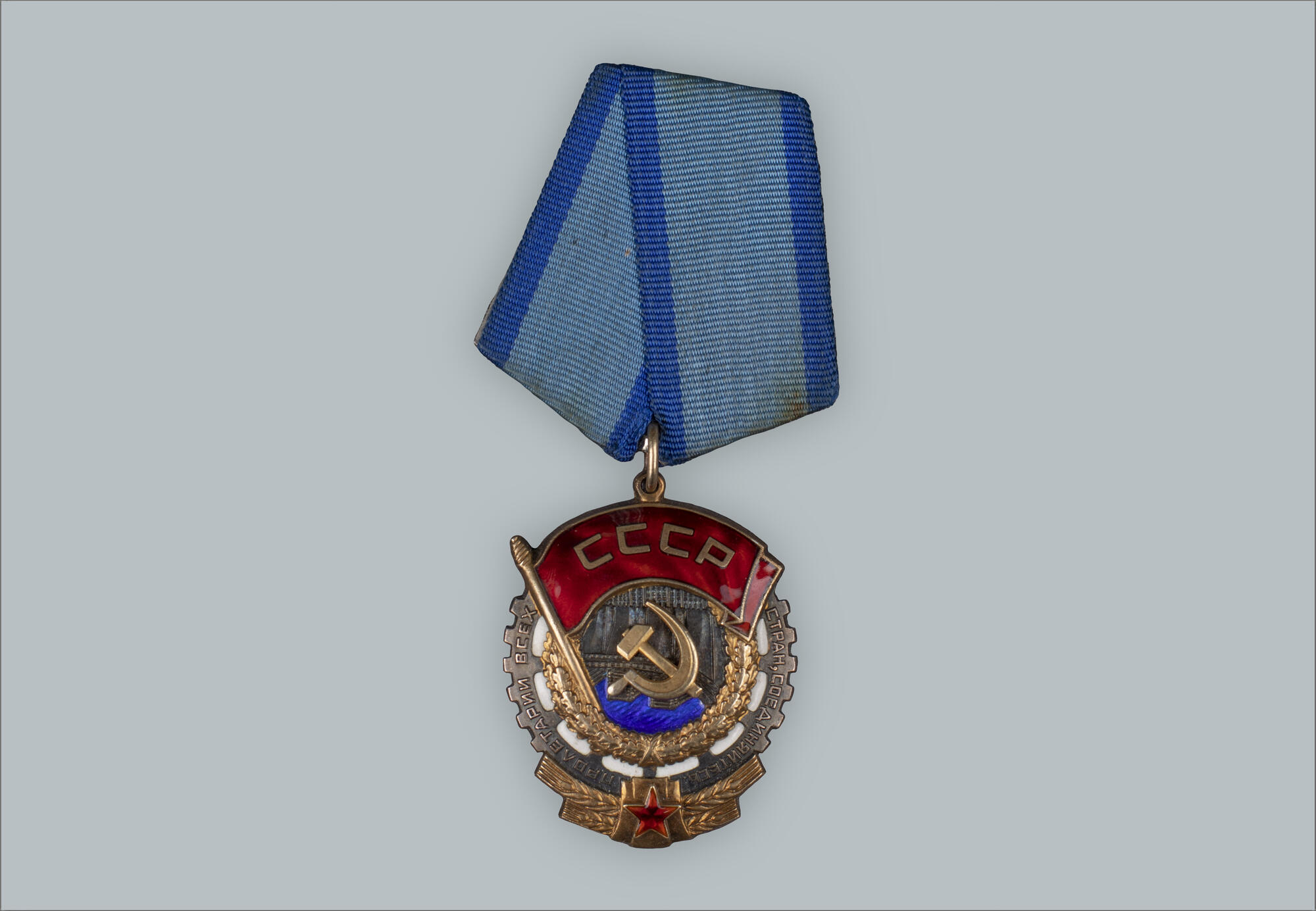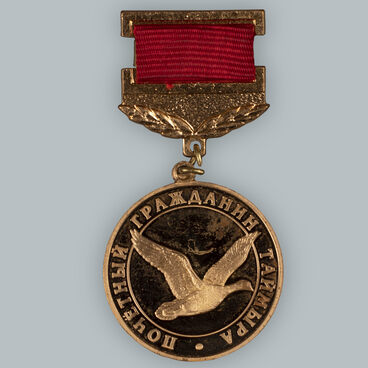The Order of the Red Banner of Labor awarded to the Taimyr Autonomous Region in 1971 is on permanent display at the Taimyr Local History Museum.
The award was handed over to the museum by the district administration. Here the award has become the jewel of the hall, where visitors are told the story of the labor exploits of Taymir’s inhabitants, which deserve to be remembered by descendants.
At the time of receiving the award, the Taimyr Autonomous Region had already been in existence for four decades, and in that time its indigenous people had managed to make incredible progress.
People built cities, factories and plants, seaports and wharves, and laid the railway, one of the most northern in the world. And they did all this in the harsh northern conditions, in the permafrost zone. They worked as fur farmers, cattle breeders, and farmers.
During the war years of 1941–1945, the Taimyr people did a lot to bring the victory closer. The Order of the Red Banner of Labor was established on 7 September, 1928. It was awarded for special merits in a wide variety of fields, except the military: achievements in the promotion and development of healthcare, agriculture, industry, commerce, and the economy.
Scientists and athletes, teachers and writers, cattle breeders, and public figures have been awarded medals.
The high award served as a distinction for individuals and entire settlements, institutions, and enterprises, both Russian and foreign. The same civilian order has also been awarded to military units that have distinguished themselves in non-combat situations, particularly in dealing with natural disasters.
The award is to be worn on the chest on the left. If the recipient of the decoration was also a Companion of the Order of the Red Banner, the military decoration would go first, followed by the civilian decoration.
This order was designed by Vasily Kirillovich Kupriyanov in 1928 and by Vladimir Vladimirovich Golenetsky in 1935.
Since the introduction of the award, six types of orders have been produced: “triangle” (1931-1936), “spiral” (1936-1943), in the form of “large oval”, “medium oval” and “small oval”. The last variety, called the “reverse with groove”, appeared around 1966.
The award was handed over to the museum by the district administration. Here the award has become the jewel of the hall, where visitors are told the story of the labor exploits of Taymir’s inhabitants, which deserve to be remembered by descendants.
At the time of receiving the award, the Taimyr Autonomous Region had already been in existence for four decades, and in that time its indigenous people had managed to make incredible progress.
People built cities, factories and plants, seaports and wharves, and laid the railway, one of the most northern in the world. And they did all this in the harsh northern conditions, in the permafrost zone. They worked as fur farmers, cattle breeders, and farmers.
During the war years of 1941–1945, the Taimyr people did a lot to bring the victory closer. The Order of the Red Banner of Labor was established on 7 September, 1928. It was awarded for special merits in a wide variety of fields, except the military: achievements in the promotion and development of healthcare, agriculture, industry, commerce, and the economy.
Scientists and athletes, teachers and writers, cattle breeders, and public figures have been awarded medals.
The high award served as a distinction for individuals and entire settlements, institutions, and enterprises, both Russian and foreign. The same civilian order has also been awarded to military units that have distinguished themselves in non-combat situations, particularly in dealing with natural disasters.
The award is to be worn on the chest on the left. If the recipient of the decoration was also a Companion of the Order of the Red Banner, the military decoration would go first, followed by the civilian decoration.
This order was designed by Vasily Kirillovich Kupriyanov in 1928 and by Vladimir Vladimirovich Golenetsky in 1935.
Since the introduction of the award, six types of orders have been produced: “triangle” (1931-1936), “spiral” (1936-1943), in the form of “large oval”, “medium oval” and “small oval”. The last variety, called the “reverse with groove”, appeared around 1966.




